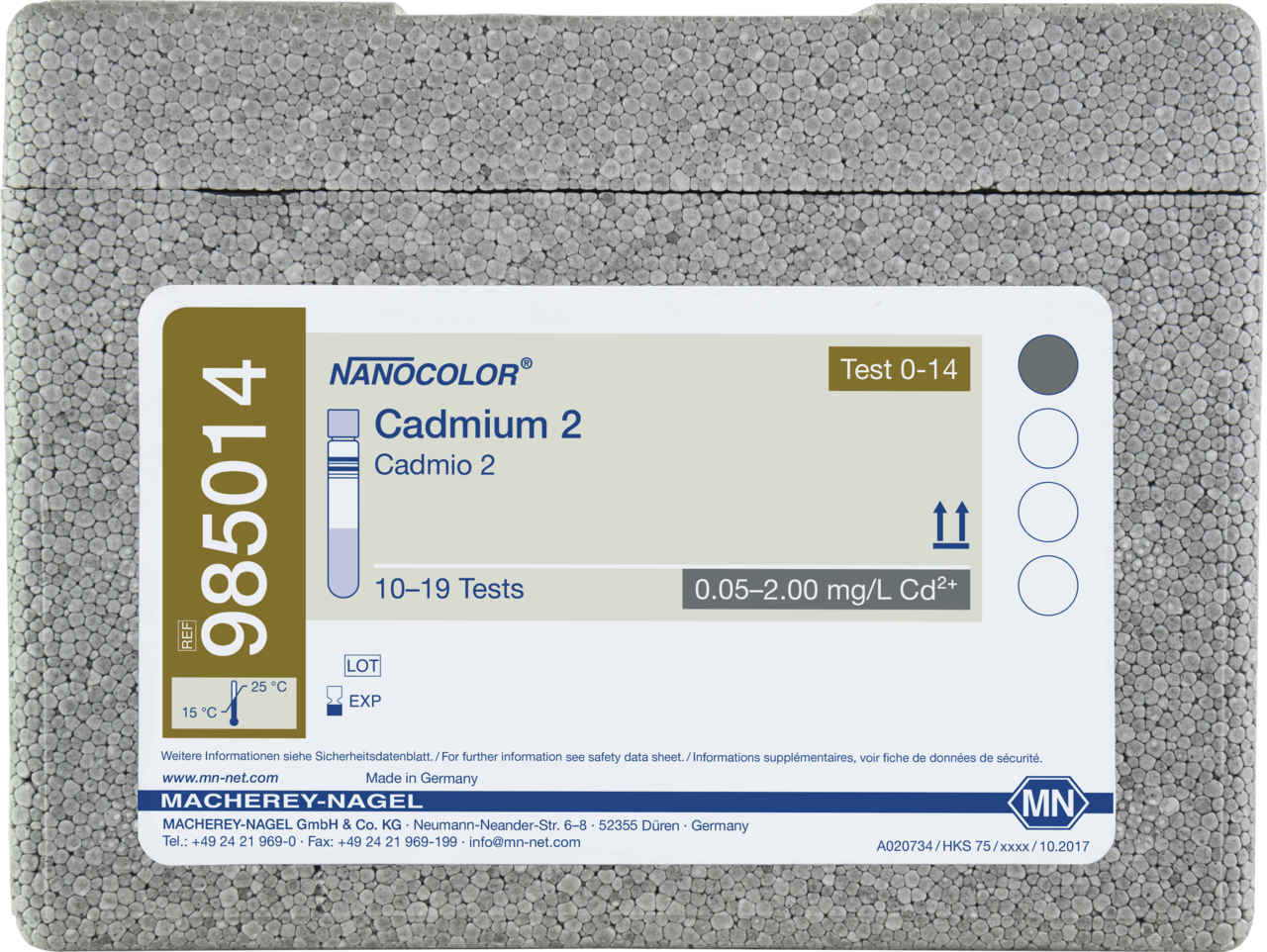Cadmium
Precise rapid tests for water and waste water samples
Cadmium and its compounds are widely used in industry as corrosion protection coatings, for the production of batteries and photovoltaic cells, for bearing metals, luminescent materials and colors. In water, these compounds are present in dissolved form as cadmium(II) ions and as complex cadmium alkali cyanide. In addition, it can be present in insoluble forms such as cadmium hydroxide, carbonate or phosphate.
Cadmium compounds are also highly toxic.
Our Cadmium Products
Reaction basis 🧪
Depending on the test (NANOCOLOR® tube or standard test), one of two different reactions is underlying:
(a) Cadion method: Cadmium forms in alkaline solution a red complex with cadion (1-(4-nitrophenyl)-3-(4-phenylazo)phenyl-triazene). This complex is evaluated photometrically.
(b) Dithizone method: Cadmium ions react with dithizone at pH > 6 to form primary cadmium dithizonate, which is stable in a highly alkaline medium and is highly soluble in an organic phase (e.g. carbon tetrachloride or tetrachlorethylene) with pink color. Interfering heavy metals are removed with dithizone in acidic medium before (first extraction in the acidic range). At this pH (pH < 3), cadmium does not form a dithizone complex.
Sample preservation 🧪
After adjusting the pH value to 1–2 with nitric acid, the sample can be preserved for storage for up to 1 month (storage vessel: PE or glass bottle).
Tips & tricks 🧪
- Background information
- Only cadmium(II) ions are detected. Decomposition with NANOCOLOR® NanOx Metal (REF 918 978) or with the decomposition kit (REF 918 08) must be performed prior to analysis for total cadmium determination.
- Sea water suitability
- Sea water analysis is possible with the tube test NANOCOLOR® Cadmium 2; with the standard test NANOCOLOR® Cadmium, it is not. For more information, please refer to the respective instruction leaflet.
- pH
- For the cadion method, the pH of the sample solution must be 7–10. If necessary, adjust the pH with nitric acid or sodium hydroxide.
- In the dithizone method, strongly alkaline and strongly buffered sample solutions must be adjusted to pH 3 with nitric acid before measurement.
- Interferences
- Various metal ions interfere with the determination by tube and standard tests. The concentration from which on interference is to be expected is specified in the respective instruction leaflets.
- In the standard test, sulfide interferes by producing lower apparent results, and cobalt by forming a brown-violet reaction color (cadmium has a pink reaction color).
- Further interfering ions are listed in the instruction leaflets.
- Turbidity
- Turbid solutions must be filtered prior to the determination of dissolved cadmium; turbidity leads to incorrect results: For coarsely dispersed turbidities, use qualitative filter paper (e.g. MN 615), for moderately dispersed turbidities, use glass-fiber paper (e.g. MN 85/70 BF) or or membrane filtration set GF/PET 0.45 μm, for finely dispersed turbidities, use membrane filtration kit 0.45 μm or GF/PET 0.45 μm.

